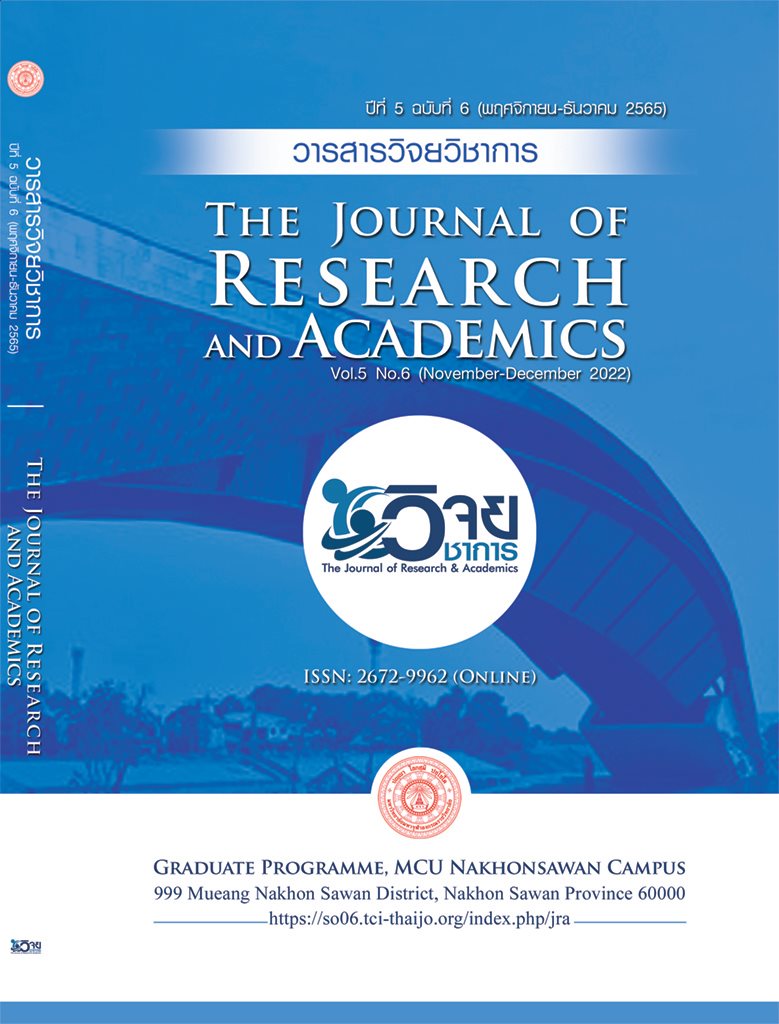ผลกระทบภาษีเงินได้รอตัดบัญชีที่มีต่อการจัดการกำไร
Main Article Content
บทคัดย่อ
บทความวิชาการนี้มีวัตถุประสงค์เพื่อแสดงให้เห็นความสำคัญและการนำข้อมูลภาษีเงินได้รอตัดบัญชีมาใช้เพื่อการตัดสินใจ โดยทบทวนงานวิจัยและบทความวิชาการต่าง ๆที่เกี่ยวข้อง เพื่อแสดงให้เห็นประโยชน์และผลกระทบที่เกิดขึ้นจากภาษีเงินได้รอตัดบัญชี ที่มีต่อผู้ใช้งบการเงิน โดยเฉพาะอย่างยิ่งนักลงทุน ซึ่งเป็นผู้ใช้ประโยชน์จากงบการเงินโดยตรง อย่างไรก็ตาม จากการทบทวนงานวิจัยที่เกี่ยวข้อง พบว่า แม้ว่าข้อมูลภาษีเงินได้รอตัดบัญชีเป็นข้อมูลที่มีประโยชน์เพื่อการตัดสินใจของนักลงทุน แต่ขณะเดียวกัน ยังพบว่านักลงทุนบางส่วนไม่สามารถสร้างความเข้าใจต่อรายการต่าง ๆ ที่เกี่ยวข้องกับบัญชีภาษีเงินได้รอตัด เนื่องจากรายการดังกล่าวที่นำเสนอในงบการเงินมีความซับซ้อน จึงไม่นำข้อมูลดังกล่าวไปใช้เพื่อการตัดสินใจ นอกจากนี้ ยังพบว่า ภาษีเงินได้รอตัดบัญชีเป็นรายการที่ผู้บริหารใช้ในการจัดการกำไรส่งผลให้ผู้ใช้งบการเงินต้องใช้ข้อมูลอย่างระมัดระวัง บทความนี้เสนอแนะวิธีการตรวจสอบข้อมูลเกี่ยวกับภาษีเงินได้รอตัดบัญชีกับการจัดการกำร สำหรับนักลงทุนในตลาดหลักทรัพย์แห่งประเทศไทย
Article Details

อนุญาตภายใต้เงื่อนไข Creative Commons Attribution-NonCommercial-NoDerivatives 4.0 International License.
1. เนื้อหาและข้อมูลในบทความที่ลงพิมพ์กับวารสารวิจยวิชาการ ถือเป็นข้อคิดเห็น และความรับผิดชอบของผู้เขียนบทความโดยตรงซึ่งกองบรรณาธิการวารสารไม่จำเป็นต้องเห็นด้วย หรือร่วมรับผิดชอบใด ๆ
2. บทความ ข้อมูล เนื้อหา รูปภาพ ฯลฯ ที่ได้รับการตีพิมพ์ในวารสารวิจยวิชาการ ถือเป็นลิขสิทธิ์ของวารสารวิจยวิชาการ หากบุคคลหรือหน่วยงานใดต้องการนำทั้งหมดหรือส่วนหนึ่ง ส่วนใดไปเผยแพร่ต่อหรือเพื่อการกระทำการใด ๆ จะต้องได้รับอนุญาตเป็นลายลักษณ์อักษรจากวารสารวิจยวิชาการก่อนเท่านั้น
เอกสารอ้างอิง
สภาวิชาชีพบัญชีในพระบรมราชูปถัมภ์. (2564). มาตรฐานการบัญชี ฉบับที่ 12 (ปรับปรุง 2562) เรื่อง การบัญชีภาษีเงินได้. เข้าถึงได้จาก http://www.fap.or.th
Bauman, M. P., & Shaw, K. W. (2016). Balance sheet classification and the valuation of deferred taxes. Research in Accounting Regulation, 28(2), 77-85.
Chludek, A. (2011). Perceived versus actual cash flow implications of deferred taxes-an analysis of value relevance and reversal under IFRS. Journal of International Accounting Research, 10(1), 1-25.
Dias Guia, L., & Alves Dantas, J. (2020). Value relevance of deferred tax assets in the Brazilian banking industry. Revista Contabilidade & Finanças-USP, 31(82), 33–49.
Edwards, A. (2018). The deferred tax asset valuation allowance and firm creditworthiness. The Journal of the American Taxation Association, 40(1), 57-80.
Harrington C., Smith W., & Trippeer D., (2012). Deferred tax assets and liabilities: tax benefits, obligations and corporate debt policy, Journal of Finance and Accountancy, (October), 1-18.
Kasipillai, J., & Mahenthiran, S. (2013). Deferred taxes, earnings management, and corporate governance:Malaysian evidence. Journal of Contemporary Accounting and Economics, 9(1), 1-18.
Kovermann, J., & Velte, P. (2019). Net deferred tax assets and the long-run performance of Initial Public Offerings. Corporate Ownership & Control, 16(4), 111-127.
Kumar, K. R., & Visvanathan, G. (2003). The information content of the deferred tax valuation allowance. The Accounting Review, 78(2), 471-490.
Laux, R. C. (2013). The association between deferred tax assets and liabilities and future tax payments. The Accounting Review, 88(4), 1357-1383.
Mear, K., Bradbury, M., & Hooks, J. (2020). Is the balance sheet method of deferred tax informative?. Pacific Accounting Review, 32(1), 20-31.
Mear, K., Bradbury, M., & Hooks, J. (2021). The ability of deferred tax to predict future tax. Accounting & Finance, 61(1), 241-264.
Morton, E. F. (2019). A historical review of the rise of tax effect accounting as a financial reporting norm. Accounting History, 24(4), 562-590.
Sundvik, D. (2017), Tax-induced fiscal year extension and earnings management. Journal of Applied Accounting Research, 18(3), 356-374.
Sutopo, B., Adiati, A. K., & Siddi, P. (2021). Earnings and Firm Value: The Moderating Impact of Large Deferred Taxes and Large Accruals in Indonesia. Business: Theory & Practice, 22(2), 241–248.


